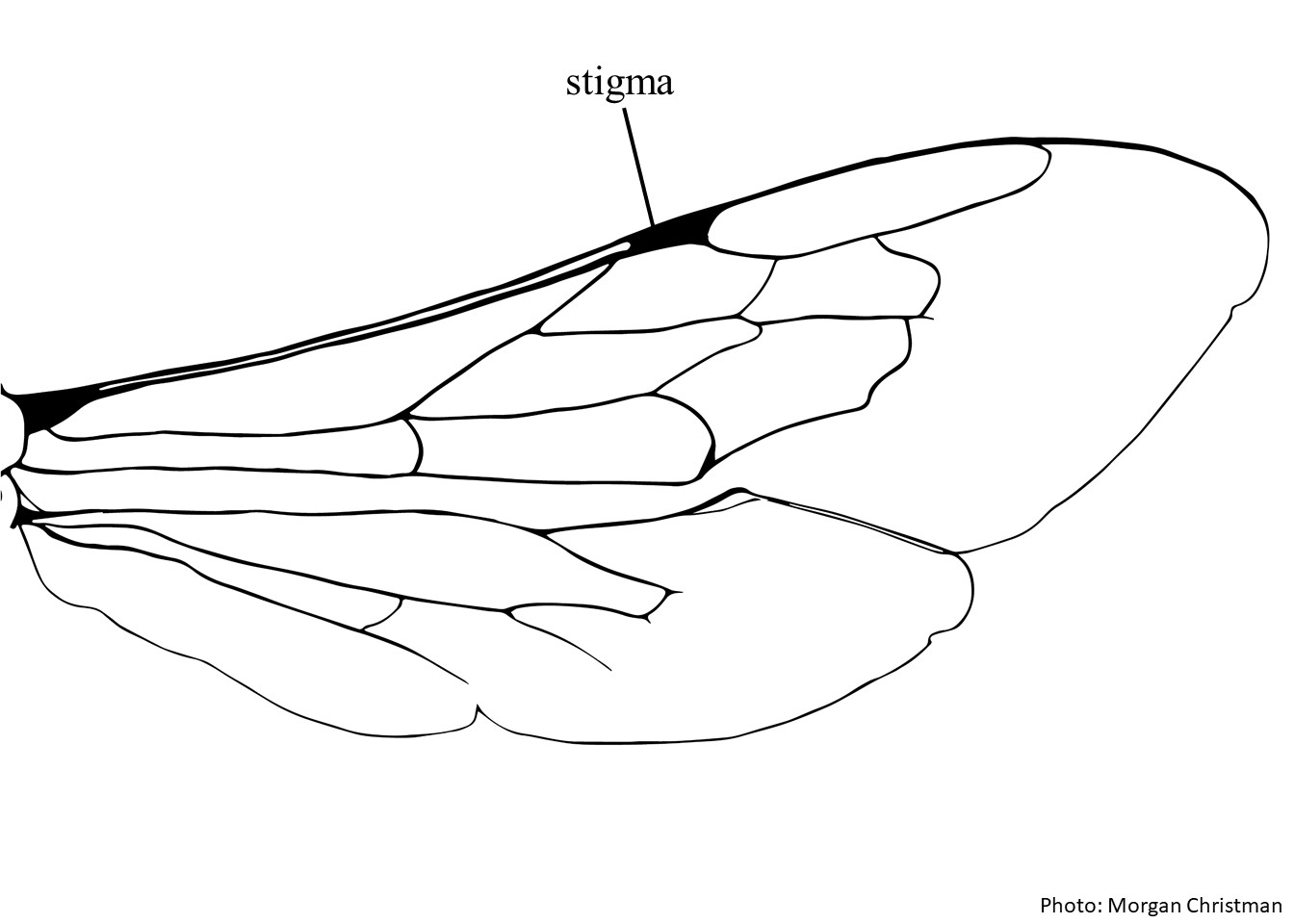Family: Megachilidae
Subfamily: Megachilinae
Tribe: Osmiini
Genus: Othinosmia Michener, 1943
Subgenera: Afrosmia, Megaloheriades, Othinosmia
Common name: none
Othinosmia are black bees with white hairs. They generally range in length from 5–8 mm, although one species, O. stupenda, is considerably larger and measures 9–12 mm in body length (Griswold 1994bGriswold 1994b:
Griswold, T.L. 1994. Taxonomic notes on some heriadines, with descriptions of three new species (Hymenoptera: Megachilidae). Journal of the Kansas Entomological Society 67: 17ndash;28.; Michener 2007Michener 2007:
Michener, C.D. 2007. The Bees of the World (2nd ed.). Johns Hopkins University Press, Baltimore and London, 953 pp.).
Othinosmia contains 13 described species in 3 subgenera worldwide. It is likely that multiple undescribed species occur (Michener 2007Michener 2007:
Michener, C.D. 2007. The Bees of the World (2nd ed.). Johns Hopkins University Press, Baltimore and London, 953 pp.); none are known to occur in the U.S. or Canada.
(modified from Michener 2007Michener 2007:
Michener, C.D. 2007. The Bees of the World (2nd ed.). Johns Hopkins University Press, Baltimore and London, 953 pp. unless otherwise stated)
 twice as long as broad or more.
twice as long as broad or more. with a transverse preapicalpreapical:
with a transverse preapicalpreapical: without laterallateral:
without laterallateral: with midapical notch, except in the subgenus Afrosmia.
with midapical notch, except in the subgenus Afrosmia.Some Protosmia are similar to some Othinosmia. The T1T1:
the segments on the top side of the abdomen, often abbreviated when referring to a specific segment to T1, T2, T3, T4, T5, T6, or T7 laterallateral:
laterallateral:
relating, pertaining, or attached to the side
line of Othinosmia is longer than in Protosmia, being level with the spiraclespiracle:
a breathing pore, usually occurring on the third thorasic segment
(Michener 2007Michener 2007:
Michener, C.D. 2007. The Bees of the World (2nd ed.). Johns Hopkins University Press, Baltimore and London, 953 pp.). Distinguishing these genera can be easier by becoming familiar with some of the subgeneric characters of Othinosmia in Michener (2007).
There are no known invasives.
Little is known about the floral resources utilized by most species of Othinosmia. Othinosmia schultzei is broadly specialized on Asteraceae (Kuhlmann and Timmerman 2009Kuhlmann and Timmerman 2009:
Kuhlmann, M. and K. Timmerman. 2009. Nest architecture and floral hosts of the South African monolectic solitary bee Othinosmia ( Megaloheriades ) schultzei (Hymenoptera: Megachilidae). Entomologia Generalis 32: 1ndash;9.).
The known nesting habits of Othinosmia involve sand, pebbles, and resin to construct nests. Members of the subgenus Megaloheriades are known to nest above ground, attaching their nests to twigs and rocks (Michener 1968Michener 1968:
Michener, C.D. 1968. Nests of some African megachilid bees, with description of a new Hoplitis (Hymenoptera: Apoidea). Journal of the Society of the Entomological Society of Southern Africa 31: 337ndash;359.). Othinosmia (Megaloheriades) globicola builds aerial nests on twigs out of a matrix of pebbles and yellowish-green resin (Michener 1968Michener 1968:
Michener, C.D. 1968. Nests of some African megachilid bees, with description of a new Hoplitis (Hymenoptera: Apoidea). Journal of the Society of the Entomological Society of Southern Africa 31: 337ndash;359.). The single cell nests are generally spherical with the nest closure being flattened. Othinosmia (Megaloheriades) schultzei builds similar nests of quartz grains, although they are attached to sandstone rocks and are hemispherical (Kuhlmann and Timmerman 2009Kuhlmann and Timmerman 2009:
Kuhlmann, M. and K. Timmerman. 2009. Nest architecture and floral hosts of the South African monolectic solitary bee Othinosmia ( Megaloheriades ) schultzei (Hymenoptera: Megachilidae). Entomologia Generalis 32: 1ndash;9.). They may reuse old nests or use them as a start to a new nest by adding on to them. The known nests of the Othinosmia subgenus are belowground, with O. (Othinosmia) filifera nesting in stony, dry soils by excavating irregular nests forming one cell lined with resinous material (Michener 1968Michener 1968:
Michener, C.D. 1968. Nests of some African megachilid bees, with description of a new Hoplitis (Hymenoptera: Apoidea). Journal of the Society of the Entomological Society of Southern Africa 31: 337ndash;359.).
Othinosmia only occurs in extreme southwest, sub-Saharan Africa with the exception of O. stupenda, the only species in the subgenus Afrosmia, which occurs in Kenya (Michener 2007Michener 2007:
Michener, C.D. 2007. The Bees of the World (2nd ed.). Johns Hopkins University Press, Baltimore and London, 953 pp.). The subgenera Megaloheriades and Othinosmia are known only from Cape Province, South Africa and Namibia (Michener 2007Michener 2007:
Michener, C.D. 2007. The Bees of the World (2nd ed.). Johns Hopkins University Press, Baltimore and London, 953 pp.).
Distribution map generated by Discover Life -- click on map for details, credits, and terms of use.